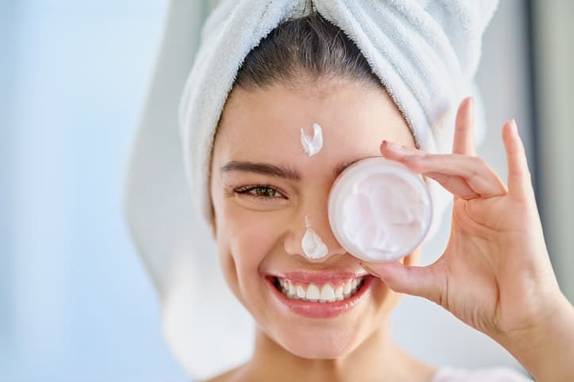Few industries are as globally impactful as the beauty and skincare industries. With worldwide revenue surpassing $564 million in 2022 and 25.4% of that revenue generated from online sales, beauty and skincare brands can’t afford to miss out on this growth.
But what does it take to compete in this continuously evolving industry? What can beauty and skincare brands do to separate themselves from their competitors and keep up with shifting consumer trends? From getting to know your target audience to set actionable goals for your next campaign, here are a few surefire ways to increase brand awareness for your beauty and skincare brand
#1. Remember the Basics of Brand Awareness
The first step towards increasing brand awareness is going back to what makes your brand recognizable to your target audience. Whether you’re partnering with a beauty and skincare digital marketing agency or doing everything in-house, this means ensuring that your ideal customers have the right impression of your beauty and skincare brand. After all, you want them to associate your company with a particular product or service they need, making you the ultimate choice to fulfill that need. With countless competitors, it’s crucial your target audience can differentiate your brand from the rest.
Whether you’re a small boutique brand or a bigger player, a proper brand awareness campaign can help you control how users perceive you while strengthening trust and laying a foundation for customer loyalty.
#2. Get to Know Your Target Audience
While building customer loyalty sounds great on paper, it requires a bit of prep work to get the ball rolling. This means diving into the types of people who make up your target audience. To begin, look at your current customer base or the people currently buying your products or following you on social media. Ask yourself, what matters to them? What problems or pain points do your products address?
From there, do some market research on where these customers shop. Given how crowded the beauty and skincare industry already is, chances are that the people who make up your target audience are shopping at these competitors as well. Is there anything about their brand messaging that looks different or better than yours?
Finally, take some time to analyze the results of your research. This will help you build a profile of your ideal customer. Think about what you want them to associate your brand with. The answer to this question will ultimately inform your campaign.
Increasing brand awareness isn’t just about finding out who to target. It’s also about finding out where those people are spending most of their time. Are they falling down the rabbit hole of YouTube or TikTok videos? Are they scrolling through their Facebook or Twitter feeds or adding to the more than 1.1 billion users who frequent Instagram? Remember, each platform provides its own unique benefits, with some platforms offering better targeting depending on the median age, demographic, or shopper profile of your brand’s ideal customer.
For brands focusing on a younger demographic, this means that Instagram and TikTok will likely provide some of the best engagement opportunities, especially if your brand can leverage the viral marketing power of hyper-focused, short-form video content. Looking to build hype for an upcoming line of beauty and skincare products? Try a cute, click-worthy countdown-to-launch video featuring some of your happiest customers. With 82% of all online traffic expected to come from video in 2022, this is just one example of the impact that beauty and skincare brands can have by meeting and engaging their customers on their own turf.
#4. Set Actionable and Achievable Goals for Your Beauty and Skincare Campaign
Next, it’s time to set some actionable and achievable goals for your next beauty and skincare campaign. Start by deciding what you want to achieve from your campaign and how you feel it will fit into the wider, long-term plans for your brand. From there, determine which digital marketing strategy will help you achieve your goals. Will your strategy involve the help of a beauty marketing agency, or will you go it alone? Will you take advantage of the speed and power of pay-per-click (PPC) advertising, or does your budget call for a slower, more affordable, and more organic approach to SEO? You might even decide that both fit your strategy.
At the same time, ask yourself how you plan to track your campaign progress. Are there any specific KPIs that you’re looking for or any third-party tools you feel might be best for the job? Though these are just a few factors to consider, they’re the foundation for any successful beauty and skincare campaign. By considering these things, you set your campaign up for success from the start with a clear direction and goals to achieve.
#5. Actively Engage Your Online Audience
In a highly competitive industry like beauty and skincare, consumer engagement is crucial. Like any relationship, your relationship with your customers is a two-way street, and it’s essential your audience feels like they’re a part of a community rather than just a source of revenue. To that end, remember that whether you’re replying to tweets, Facebook comments, or Instagram DMs, your messaging and brand voice need to be both compelling and conversational.
To put it bluntly, today’s customers aren’t interested in “corporate speak” or overly-promotional sounding language. They’re looking for a friendly, conversational tone that engages first and promotes second, even if that means using more humor, slang, or colloquial terms in your messaging. They’re looking for creativity, and above all, they want companies to speak to them as a friend would, rather than a corporation. That means mimicking the inner dialogue that every beauty and skincare customer experiences when they’re looking for products to suit a specific need. It means paying attention to the users who already follow you, engaging them with content that makes them feel special, whether that’s through promotional contests, collaborative, user-generated content campaigns, or behind-the-scenes looks into your company. Authenticity is at the core of any successful social media campaign, so lean into your audience’s preferred voice and focus on the community aspect above all else.
#6. Show Off Your Brand’s Personality
While the above are just a few examples of actively engaging your target audience, they also highlight just how easy and necessary it is to show off your brand’s personality. After all, when it comes down to it, isn’t that the whole point of a brand awareness campaign? To that end, don’t be afraid to think outside the box when it comes to the types of content you produce or the updates you share on social media. If you feel that you can talk about your company’s achievements in a fun or exciting way, do it! If the lives of your employees might make for some engaging content, add it to your ideation list and get to brainstorming. There are no wrong topics or updates as long as your audience responds well.
Alternatively, don’t be afraid to look to competitors or brands in different industries for creative inspiration, especially when it comes to boosting your brand’s engagement levels. Marketers and consumers will likely remember the fast food Twitter feuds that erupted between brands like Popeyes, Chic-Fil-A, and Wendy’s, all of which showcased the benefits of brands embracing the snarkier side of social media. All in all, it’s about keeping your brand messaging consistent, and helping your target audience make the right associations about what your company stands for.
#7. Track Your Beauty and Skincare Campaign Results
Given all that’s involved in a successful beauty and skincare campaign, it’s important to stay on top of the campaign’s progress and the efficacy of each strategy. If you’re running a Twitter campaign, for instance, you’d do well to track the number of impressions, shared tweets, and hashtag mentions. If you went the paid ads route instead, Google Analytics will help you track your conversions. While the metrics you measure may vary based on the marketing strategy, the main point is that you actively measure your campaign results. There is no “set it and forget it” approach to digital marketing, so it’s crucial you monitor and make adjustments along the way.
#8. Partner with a Beauty Marketing Agency
At the end of the day, there are many moving parts in any brand awareness campaign, especially in industries as fiercely competitive as beauty and skincare. Not only that, but the digital marketing landscape is constantly evolving, and consumer interests or expectations can shift just as rapidly. That’s why many brands partner with an experienced digital marketing agency, specifically skincare and beauty digital marketing agencies with experience in your market.
Not only will an agency be familiar with the concepts highlighted throughout this blog, but they’ll likely have a few more tricks up their sleeves as well, with case studies to showcase their expertise in SEO, PPC, and social media marketing.





